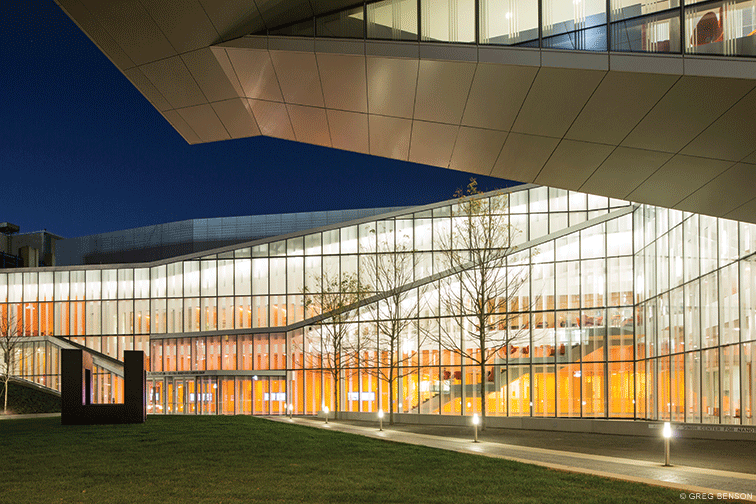
Getting to know the Singh Center for Nanotechnology.
BY TREY POPP | Photography by Greg Benson
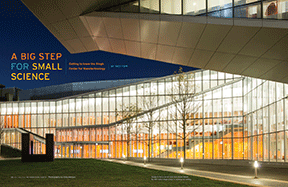
“Atoms,” Eduardo Glandt GCh’75 Gr’77 declares, “are horrendously sensitive.”
The Nemirovsky Family Dean of the School of Engineering and Applied Science (SEAS) is standing before a locked white door in the basement of the Singh Center for Nanotechnology, marveling at the exasperating fussiness of very small things. The building blocks of matter are finicky. When they don’t have billions of brethren to bond with, they’re practically impossible to pin down. They flee before the weakest of magnetic fields. They skitter when cell phone signals go by. Whispers are hurricanes. Ultraviolet light makes them shake like jackrabbits at a bobcat reunion.
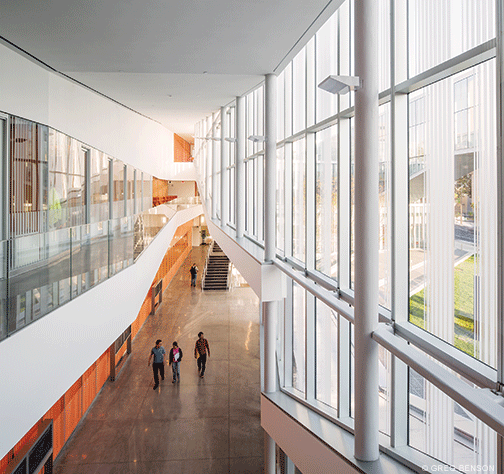
The building above us is at the mercy of all these disturbances, amplified a thousand-fold. City buses bounce along Walnut Street at the property’s southern edge. The bridge over the Schuylkill River rattles into the ground half a block to the east. Trolleys rumble through an aging tunnel one block to the northwest. The earth in every cardinal direction is a bewilderment of water mains and steam pipes and electromagnetic signals pulsing through telephone wires.
But at this particular threshold, Glandt is unfazed.
“This is the sweet spot of the campus,” he intones, his warm baritone lilting with the cadence of his native Argentina. “Of the universe.”
We are standing on three feet of concrete laid directly upon bedrock, in a section of the building that’s structurally isolated from everything else. The room behind the locked door—which rebuffs the dean’s keycard with the stern flash of a red light—is sealed even more hermetically. Six metal plates encase the chamber, which closely approximates a cube measuring 18 feet on each side. A specialized mechanical system supplies precisely heated air and water without vibration. A team of geophysicists determined that physical tremors and electromagnetic fluctuations bottomed out at these exact coordinates.
“So there’s no fields,” Glandt says. “No cellphone reception. The flow of air is totally laminar, so that there is no turbulence, no eddies. The temperature is controlled to plus-or-minus .1 degree Centigrade. It’s insane, okay?”
The room was designed to hold an aberration-controlled electron microscope, a $5 million device that “allows you to look at individual atoms under water,” Glandt explains—a capability that will truly bring nanotechnology into the wet realm of biology at Penn.
The hinges on the doors had to meet precise specifications. The chairs couldn’t contain any part that might get magnetized. “They installed lab cabinets that were metallic,” Glandt remarks, “but they had to be removed because metallic cabinets can get magnetized, and when somebody opens or closes a door, an atom will move—one atom, okay. Because they’re looking at individual atoms.”
The University has not acquired the microscope yet. “You cannot even think of finding $5 million until you have the room, okay?” Glandt says. “And now we have the room.”
Passersby who have been watching the Singh Center take shape for the past several months—not a few of them mistaking it for a contemporary art museum—might have trouble imagining such a blank-faced chamber lurking behind the building’s exuberantly crystalline and cantilevered facade. But this unadorned crypt is in fact “the core out of which everything else spirals,” as University Architect David Hollenberg GAr’75 puts it.
“If this were a Gothic cathedral,” Hollenberg likes to say, “this is where the saint’s bones would be.”
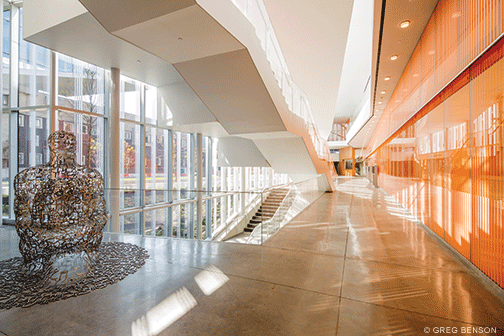
The Singh Center, named in honor of Krishna P. Singh GME’69 Gr’72, who donated $20 million toward its creation, represents a number of firsts at Penn. It’s the first building to be jointly developed by two schools at the University, the School of Arts and Sciences (SAS) and SEAS. The aberration-controlled electron microscope, when it’s installed, will be the first of its kind in the greater Philadelphia region. The building tightly weaves high-resolution nanofabrication facilities with nanoscale characterization tools, so that measurements and other information collected about the structure of materials can be fed back to refine their fabrication.
According to physics professor Charlie Johnson, who recently became the new director of Penn’s Nano/Bio Interface Center (NBIC), the 78,000-square-foot building will give Penn “something not entirely unique, but quite rare—which is that in this one building we will house the major tools of nanoscience all together. Not just, like, one electron microscope, but I think six or seven electron microscopes with all different types of capabilities.” And they’ll be directly downstairs from an e-beam lithography system, silicon-etching tools, thermal processors, and other cutting-edge equipment that will permit the creation of novel materials.
The Singh Center also represents an architectural first, in that the firm that designed it had never before undertaken an advanced scientific building of this kind.
This was an intentional choice, according to Hollenberg.
“It’s often the case that people want firms who’ve done similar buildings,” he says. “We explicitly did not do that. We wanted people who were going to bring a fresh design approach. None of the firms that ended up on our list had ever done a nanotech building. Almost by design, that’s who got on the final list.
“Of course, that makes one a little nervous,” he continues. “After all, you might get a good design, but fundamentally this is about a building where the science will function.”
So the University did something a little unusual with its request for proposals, mandating that the architects associate with one of five specified engineering firms that had experience with the sorts of technical challenges that come with the nanotech territory.
That was not the only constraint.
“The scientific community that was going to oversee this building had to be persuaded that it was going to be possible on this site,” Hollenberg says. “It was proved that we could do that, but that the most sensitive stuff on the site would have to go as far north on the site as possible,” away from street traffic. So a substantial setback from Walnut Street was a “foregone characteristic before the design even began.”
Glandt, whose passion for architecture had already helped to shape Engineering’s Levine Hall and Skirkanich Hall, met with about 10 architecture firms, traveling as far as Switzerland and Tokyo. Ultimately the University chose New York-based Weiss/Manfredi, which partnered with M+W Group, an engineering and construction firm that specializes in laboratory design. (Marion Weiss is the Graham Chair Professor of Architecture in the School of Design.)
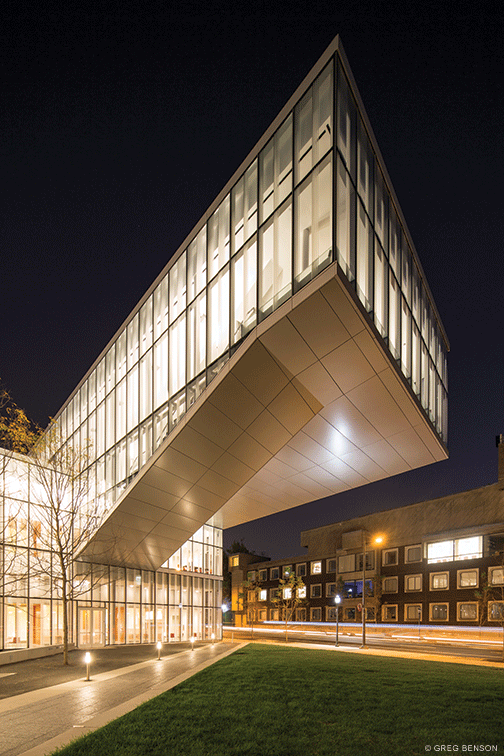
The building’s most striking feature is a 65-foot-long cantilever suspended two stories above a central courtyard that embraces Walnut Street. From the sidewalk it looks like a thumb shoved directly into gravity’s eye. (Before the Singh Center officially opened, Glandt could be seen stationed outside at various times of day and night, using a stopwatch to measure the duration of awe in the faces of passing pedestrians.) Inside, it feels like standing at the prow of a ship, gazing down the long alley of Walnut Street toward the heart of campus.
The Singh Center’s most appealing characteristic, however, is subtler—and to some extent a matter of what the building is not.
“What goes on in this building, if it had its say, it fundamentally wants a windowless, really solid box,” Hollenberg notes. Yet not only is the Singh Center clad entirely in glass panels, whose frosted vertical stripes split the sunlight into a dramatic corduroy of brightness and shadow, but the urge toward transparency carries over to the interior.
Inside, the building basically consists of three boxes. The first encompasses the bottom two floors of the northern wing, which house the Magerman Characterization Wing (named in honor of SEAS Overseer David Magerman C’90 Eng’90) and the Quattrone Nanofabrication Facility (made possible by a gift from the Frank [W’77] and Denise [SAMP’78] Quattrone Foundation). The second box sits directly above that: a vast network of pipes and ducts and filters that supply dust-free air and ultra-purified water to the labs below. The third, and biggest, box is a light-splashed public atrium that ingeniously conceals the physical plant even as it exposes the outer row of labs to a full frontal view—albeit a view tinted a very particular shade of orange.
“Dean Glandt and our colleagues in SAS wanted to do what was possible to make the science in this building transparent, both symbolically and literally, to those who would be interested in it,” Hollenberg explains. “And the result is this great [transparent] orange wall, which to my understanding was either the only or the best color to deal with ultraviolet infiltration into the clean space—to take away that ruinous prospect.”
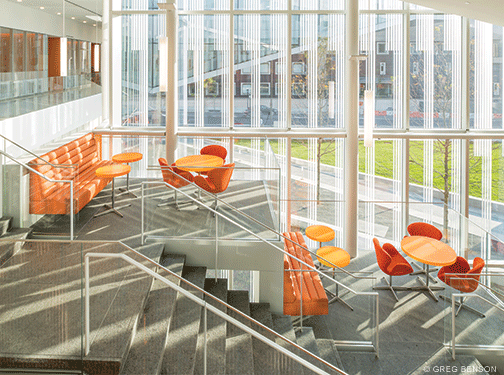
That color choice, essentially mandated by the laws of physics, became an interior-design theme throughout a building that is lavishly outfitted with informal gathering spaces. The plush cushions lining a row of diner-style banquettes glow like Halloween pumpkins. Concrete lab floors wear subtle mustard tones; conference-room carpets pop like persimmons in sunshine. Tangerine tabletops punctuate small groupings of carrot-colored chairs in what Philadelphia Inquirer architecture critic Inga Saffron, in a gushing review, described as “nightclub-like lounges.” Those little opera-box terraces ascend a sweeping switchback that delivers you to the far edge of the cantilever, where four ultramodern Vitra chairs face the glass in a blaze of marigold.
If nothing else, the Singh Center’s color palette is a full-throated expression of institutional self-confidence. It takes a secure ego to splash your newest academic flagship with what many Ivy League partisans might innocently mistake for Princeton Orange.
The scientists who will be using the Singh Center have reasons of their own to feel renewed confidence.
Charlie Johnson points out that advanced electron microscopes are not exactly new on campus. “We had them in the Edison Building. They worked,” he says, referring to the aging structure the Singh Center supplanted. “We also had scanning probe microscopes, which typically involve moving a very, very, very tiny tip over things—it’s like nano-scale Braille reading, except that the bumps you look at are individual atoms.
“But the Edison Building was not going to be able to take us into 21st-century electro-microscopy,” he continues. Ultimately, the smaller the scale of study there, the blurrier everything was going to get. And atoms are unimaginably small. A single sheet of this magazine’s paper, laid flat on the table, would tower over a carbon atom roughly the way the Empire State Building would dwarf a fruit fly egg deposited on 34th Street, if the Empire State Building was also 100 miles wide.
“If you imagine that you’re trying to build things one atom at a time,” says Dawn Bonnell, former director of the NBIC and currently vice provost for research, “and the building floor is vibrating … or the temperature changes, or there are dust particles in the air that can be 10,000 to 100,000 times bigger than the things you’re trying to manipulate, then you don’t get very far in the research.”
Overcoming these kinds of limitations has been the defining theme of Glandt’s tenure as dean of SEAS. When he took the reins in 1999, the school hadn’t added any major new buildings in half a century. “Penn was woefully behind,” he says. “We were doing nanotechnology—we still are—in buildings designed for civil engineering. We were doing chemical engineering, my field, in the Towne building. We had times when we didn’t obey code, and there was a leak of some fluorinated nasty gas and we’d have to evacuate. But the building was designed for drafting rooms for civil engineers in 1806.”
Transforming what Glandt calls “a good 20th-century school into a hot high-tech innovation center” meant transforming the physical plant. First came Levine Hall, a $15.5 million locus of information science and robotics [“A Passion For Putting Things Together,” Nov|Dec 2003]. “That was the low-hanging fruit for us,” says Glandt, “because it’s computer science, and it’s cheaper.” Next came Skirkanich Hall, a $42 million project that expanded bioengineering [“Gazetteer,” Jan|Feb 2007].
The $92 million Singh Center represents the final and most ambitious prong of Glandt’s strategic plan. “Nanotechnology is extremely important because it’s not only the nano,” he says, “but it is code language for all the part of engineering that’s not applied math or biology, but is actually based on physics and chemistry, which is core.”
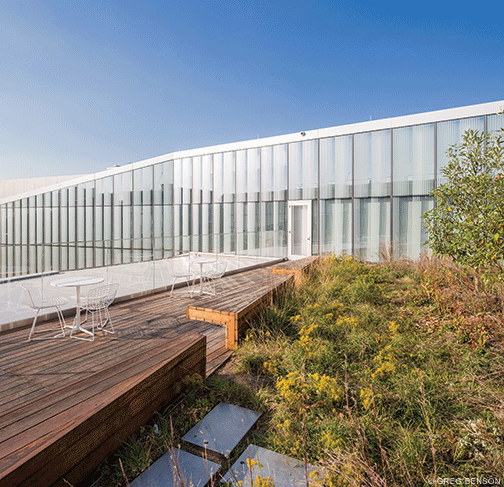
The building has already begun attracting globally renowned science and engineering faculty to Penn. In addition to the shared fabrication and characterization facilities, the building will contain 10 private labs. As of early fall, the University had filled two of them with new hires. Harald Geissen, whom Glandt calls “a major force in photonics,” will come to Penn from the University of Stuttgart in Germany. And the inaugural director of the Singh Center is Mark Allen C’84 ChE’84 EE’84, a pioneer in the field of micro-electromechanical systems who has spent most of his career at the Georgia Institute of Technology, where he served as vice provost of research and innovation and more recently as executive director of its Institute for Electronics and Nanotechnology.
“He is the catch of the millennium,” Glandt declares. “He’s an engine of generating enterprise … He gets the operation of these facilities, how you make them into a profitable business, if you wish—how you at least have them pay for themselves.”
In Allen’s view, which is shared widely by his new colleagues, the Singh Center’s success will hinge on cultivating a broad-based “nanotech ecosystem” both within and beyond Penn’s borders.
“First and foremost, we are a University-oriented facility,” Allen says. “We have to make sure the needs of our researchers are served. But if that’s all we do, then I don’t think we have realized the full potential of the place.
“So what I would hope to see in addition,” he continues, “is that we have collaborative activities with many of the universities close by. I think bringing in the intellectual contributions of our neighbors will be extremely helpful. I hope we have the opportunity to engage industry in a collaborative-research way, where researchers from industry and researchers from Penn can come together and try to solve the key problems of nanotechnology generally, but also the specific problems that perhaps that particular industry is facing, and leverage the facility in order to achieve that.
“And then I also envision situations where what’s needed is really just access to the equipment by external users. In other words, we’re offering brains and equipment, and I hope people will engage both, but I could also imagine situations where people know what they want, and so we would like to provide the access to the equipment necessary to achieve their goals.”
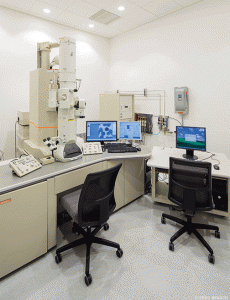
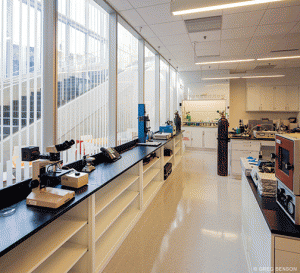
Researchers within the University will pay to use the facilities from their grants or departmental funds, according to Glandt; corporate users will likely pay higher rates. There are a handful of nanotech centers in the mid-Atlantic region that will compete for such users—including the National Institute of Standards and Technology in Maryland, the University of Delaware, and Princeton University, which is mulling an expansion of its own nanotech facility—but Allen feels that demand currently outstrips supply. He compares the current state of nanotechnology research and commercialization to where micro-electromechanical systems (MEMS) was in the 1980s.
“There was speculation in the popular press about really-out-there possibilities,” he recalls. “The one I remember was small, autonomous machines that in just a few years would be circulating through the bloodstream cleaning out arterial plaque. Well, guess what: that didn’t happen.”
Instead, MEMS followed a familiar trajectory from basic science to translational research to the first actual products—like the automotive accelerometers that trigger airbag inflation. Now it’s the basis of a multi-billion dollar industry. “MEMS devices are everywhere now,” Allen says. “In your car, in your cellphone, in your electronic-gaming console, in your projectors, in your printers … and even in your body—although the original autonomous plaque cleaners are not quite there yet.
“I imagine that what we call nanotechnology today will follow a similar development curve, and since it’s about 10-15 years behind microsystems, we are at the inflection point right now. That’s why it is so exciting to be an integral part of something like the Singh Center at a leading university like Penn right at this moment in time.”
Charlie Johnson has a similar view from his new perch as director of the Nano/Bio Interface Center.
“The pathways to real applications that would really impact our lives is starting to become clearer,” he says.
“In my group, we’re working on nanomaterials like grapheme or carbon nanotubes. These are very sensitive elements, and they detect what’s happening in their environment. If anything changes in their environment they put out a signal that we can read out electrically—and we couple them to biological molecules that bind to targets we’re interested in. So this is a pathway to build sensors for molecules in your body that are indicative of cancer. Or maybe sensors that could detect molecules that are emitted by your body when you’re diseased.
“This is something that is definitely still out-there,” he allows, “but we can start to say see the pathway for how to get there.”
NBIC member Christopher Murray, the Richard Perry University Professor of chemistry and materials science [“Proof of Concept,” Sept|Oct 2008], focuses on another branch of nanotechnology. “He’s interested in coupling these little tiny particles to protein molecules,” Johnson says. “And one of the goals—still I’d say a vision, not something in hand at the moment—is to make little systems where the protein would harvest light, like proteins do in plants … and the nanoparticle would provide a way to store the energy in a chemical form. It would be like an artificial leaf, a system built by people that would absorb energy from the sun directly and convert it into a useful chemical fuel.”
Allen is eager to cast a net that covers the widest possible swath of nanotechnology research, spanning both academic disciplines and the continuum stretching from basic science to translational research. The overarching hope is embodied in the Singh Center’s architectural emphasis on public gathering spaces, which account for a very substantial portion of the building’s square footage.
“The purpose of it—and this is what actually does happen—is that people congregate and talk about what they’re doing in the labs,” says Bonnell. “They exchange information about best practices and interesting ideas. Faculty from the medical school will be talking to mechanical engineers, who will be talking to chemists … The ideas that come out when people from those different backgrounds are thinking together is just amazing to see.”
SAS Dean Steven Fluharty, Bonnell’s predecessor as vice provost for research, echoes that sentiment. “This magnificent building may be the only one on campus that was actually designed to foster building bridges across departments, across schools, across disciplines, across our region, and across the public/private divide,” he says.
As the labs are filled, and that intellectual ferment begins to percolate in the public spaces around them, it is hard to imagine anyone enjoying the chatter more than Glandt, who plans to step down as dean in 2015. When asked to reflect on his long legacy at Penn, he points to the faculty he has brought here and worked to retain.
“Whatever they do, that’s a legacy,” he says. “The buildings were a way of attracting them, and it works. It works like a charm.” He pauses, and gazes across the Singh Center’s soaring atrium into the warm wash of amber that shields the outer row of clean rooms.
“It’s the labs, stupid—that’s my line, okay? You can talk all you want. But if you’re going to build stuff, you need places to do it.”

